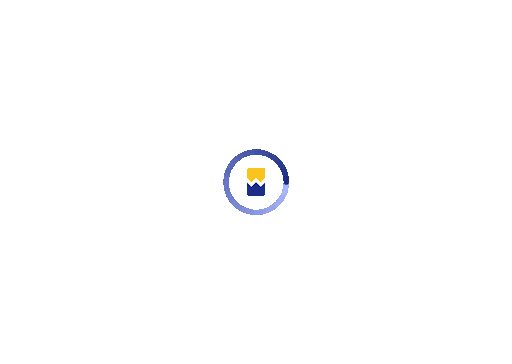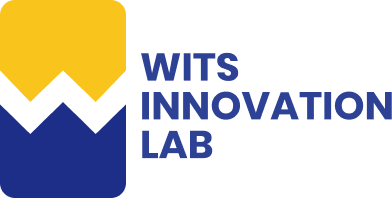Published - 2 years ago | 6 min read
Beyond Screen Time: Managing Digital Wellness in the Era of Remote Work

The transition from office-based to remote work has shaken how we define productivity and wellness. The lines between personal and professional lives are increasingly blurred, often resulting in heightened stress levels and impaired mental well-being. As digital screens become the primary medium for professional interaction, the concept of "screen time" seems too narrow to encapsulate our entire spectrum of challenges. This article delves into transformative strategies and practices that every company should implement to manage digital wellness in this era of remote work. We'll explore these tips in depth, drawing from real-world examples of companies that have set the gold standard in digital wellness.
Designing a Digital Ecosystem Rooted in Mindfulness
Mindful Screen Time Allocation
Instead of letting employees wade through an endless barrage of emails and notifications, companies like Atlassian are incorporating "Mindful Screen Time" into their operational ethos. They offer a dashboard where employees can visualize how their screen time is divided between creative work, meetings, and administrative tasks. This helps make conscious decisions to allocate time effectively, thus reducing digital clutter and stress.
Digital Minimalism
Companies are increasingly turning to digital minimalism to counteract the impact of digital overflow. Slack's "Do Not Disturb" feature is a case in point, designed to mute notifications and educate employees on optimal communication practices. Leaders are encouraged to define periods where digital communication is minimized, enabling focused, deep work periods.

Cultivating a Culture of Physical Wellness
Mandatory Screen Breaks
Corporate giants like Google are pioneering the concept of "mandatory screen breaks." Algorithms embedded in their internal systems prompt a scheduled activity halt, suggesting short physical exercises or relaxation techniques. This practice has been proven not just to reduce eye strain but also to improve overall productivity.
Desk Ergonomics
Companies like Ergotron offer sit-stand desks integrated with software that alerts you when to change your posture. This prevents common health issues like back pain or carpal tunnel syndrome that could arise from prolonged screen usage.

Emotional Resilience in a Digital Environment
Emotional Intelligence Training
Adobe is a leading example of companies that integrate Emotional Intelligence Training programs into their digital platforms, aiming to teach employees how to manage stress, anxiety, and other emotional responses triggered by ongoing digital engagement.
Mindfulness and Meditation Apps
Introducing mindfulness and meditation apps like Headspace into the corporate benefits package is becoming common. These apps are often made accessible directly from the employee's work dashboard, making it easier for them to take short mindfulness breaks to recharge emotionally.

Investing in Asynchronous Communication Tools
Task-based Communication
Tools like Asana and Trello are excellent for task-based communication, reducing the need for real-time digital interactions. By limiting the incessant back-and-forths commonly associated with email and instant messaging, these platforms contribute to more focused work and less screen time.
Video Messages over Video Calls
Companies are replacing routine video calls with video messages using tools like Loom. This allows employees to convey the same amount of information without coordinating a mutually convenient time, thus reducing digital stress.

The Critical Importance of Work-Life Balance
Right to Disconnect Policies
France led the way with its "Right to Disconnect" law, and many companies globally followed suit. Policies that define 'work hours' even in a remote setting are crucial in maintaining a work-life balance, thus contributing to digital wellness.
Family-Friendly Work Schedules
Salesforce has implemented family-friendly work schedules, which allow parents to align their work commitments with family needs. This reduces the psychological stress of juggling professional demands and personal responsibilities, making digital engagement more manageable.

Mindful Screen Use with Advanced Analytics
Real-Time Stress Analytics
Companies like SAP are developing advanced analytics tools to measure employee stress levels in real time. These analytics are based on typing speed, mouse movements, and webcam expressions. When signs of stress are detected, the system automatically suggests a short wellness activity, effectively guiding the employee toward a balanced digital lifestyle.
Mood-Responsive UI Designs
Adobe has been experimenting with mood-responsive UI designs that adapt the work environment according to the detected mood of the employee. For instance, if signs of stress are detected, the UI could switch to a more calming color palette and suggest the employee take a short break.

Community Building and Peer Support Systems
Community Building and Peer Support Systems
LinkedIn has successfully implemented peer mentorship programs where employees are paired to share experiences, coping mechanisms, and best practices for managing digital stress. These partnerships are a constant source of support and motivation, making addressing the challenges of a digital work-life more accessible.
Open Forums for Emotional Well-being
Companies like Pinterest have established open forums where employees can discuss their challenges and solutions in managing digital well-being. These platforms offer practical tips and normalize the conversation around digital wellness, making it a collective responsibility rather than an individual burden.

Reinventing Training and Upskilling
Micro-Learning Modules
Instead of prolonged training sessions that can contribute to screen fatigue, Dell has adopted "Micro-Learning" modules. These short, highly focused learning segments allow employees to upgrade their skills without overwhelming them with extended screen time.
VR-based Training Programs
Walmart is pioneering the use of Virtual Reality for training programs. These immersive experiences break the monotony of traditional digital interfaces, offering a unique blend of engagement and education while effectively managing screen time.

Advanced Digital Literacy as a Key to Wellness
Cyber Hygiene Training
IBM is a front-runner in educating its employees about "Cyber Hygiene." This goes beyond basic cybersecurity measures to educate employees on maintaining a clean, uncluttered digital workspace. This proactive approach mitigates risks and significantly reduces the stress of managing a chaotic digital environment.
Advanced Email Management Techniques
Goldman Sachs has revolutionized the often monotonous email management task by training employees in advanced techniques like "The Four D’s" (Delete, Do, Delegate, and Defer). These methods empower employees to keep their inboxes and, by extension, their digital lives well-managed and stress-free.

Navigating the Terrain of Virtual Office Politics
Anonymous Feedback Channels
Creating a safe space for employees to express their concerns is crucial. LinkedIn has successfully implemented anonymous feedback channels within its remote working infrastructure, allowing employees to speak openly about digital stressors without fear of repercussions.
Transparency in Algorithmic Assessments
As AI-powered performance assessments become more prevalent, understanding these metrics is essential for reducing digital stress. Airbnb regularly educates its employees on algorithmic reviews, quashing fears and misunderstandings that can lead to stress.

Conclusion
As the boundaries between our personal and professional lives continue to meld in the era of remote work, companies must redefine their approach to digital wellness. Simple metrics like 'screen time' no longer suffice; what is required is a multi-dimensional strategy that accounts for physical health, emotional well-being, and work-life balance. The tips outlined in this article offer a comprehensive framework that every company can employ to build a healthier, more sustainable digital work environment for their employees.
By adopting these strategies, we can look forward to a future of work that is more productive and human-centric. The challenge of digital wellness is one that we face collectively, and the solutions, as we've seen, are both innovative and accessible. It is a collective journey towards a balanced digital life and a journey worth taking.
By adopting these strategies, we can look forward to a future of work that is more productive and human-centric. The challenge of digital wellness is one that we face collectively, and the solutions, as we've seen, are both innovative and accessible. It is a collective journey towards a balanced digital life and a journey worth taking.

Written by / Author
Manasi Maheshwari
Found this useful? Share With
Top blogs
Most Read Blogs
Wits Innovation Lab is where creativity and innovation flourish. We provide the tools you need to come up with innovative solutions for today's businesses, big or small.
© 2025 Wits Innovation Lab, All rights reserved
Crafted in-house by WIL’s talented minds

